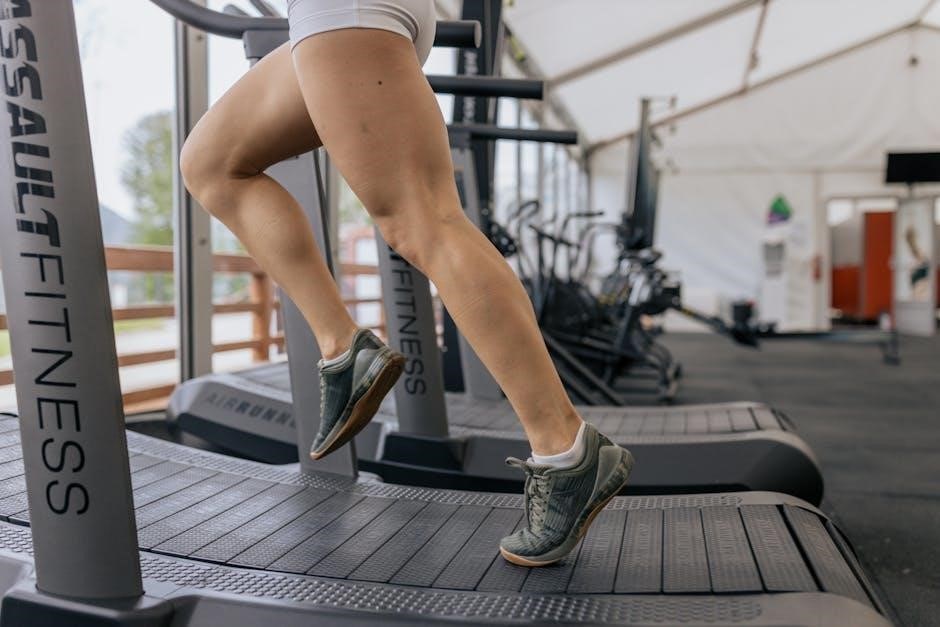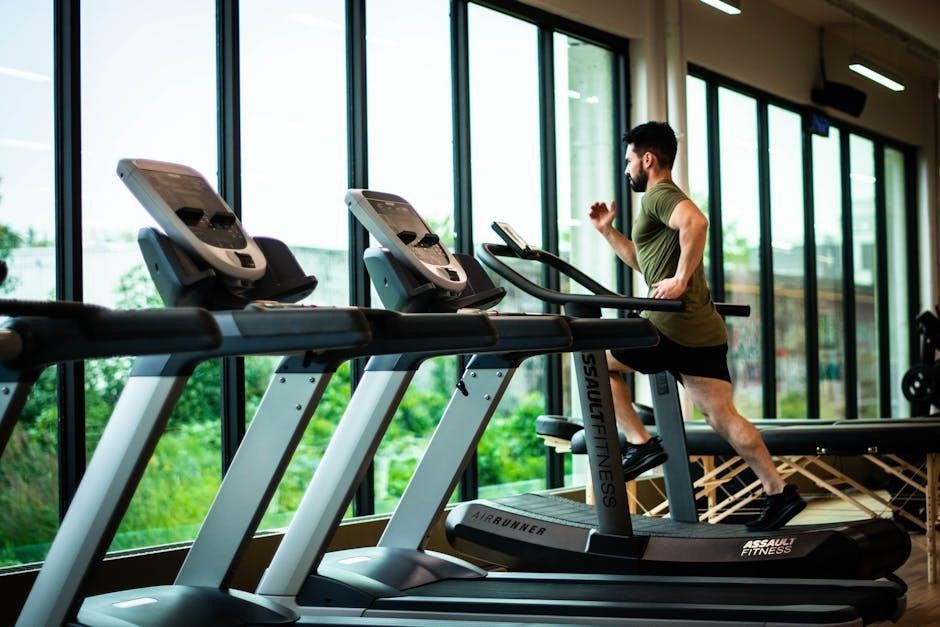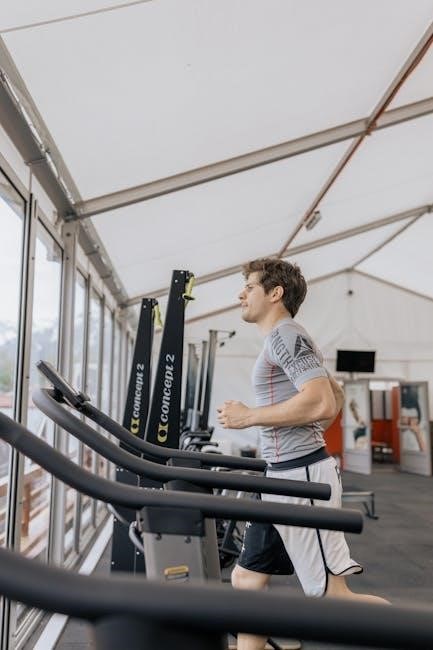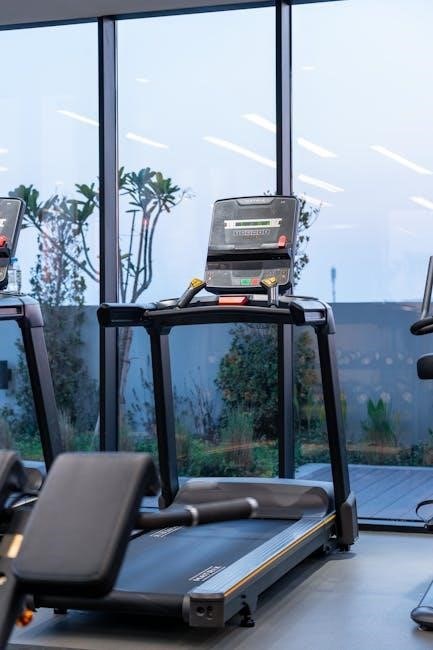running on a manual treadmill

running on a manual treadmill
Manual treadmills offer a unique running experience, powered entirely by your own effort – a departure from conventional electric models.
These treadmills respond directly to your motion, allowing for limitless speed control and potentially higher velocities than electric versions.
The ability to instantly adjust pace makes them ideal for HIIT workouts, and some designs even enhance running form.
Today is 11/26/2025 11:32:57 ()
What is a Manual Treadmill?
Manual treadmills represent a distinct category of fitness equipment, differing significantly from their motorized counterparts. Unlike electric treadmills, these machines don’t rely on a motor to drive the belt; instead, you are the power source.
Your strides and leg movements directly propel the running surface, creating a more natural and engaging workout experience.
This design often features a curved belt, requiring consistent effort to maintain momentum.
They are a fantastic option for those seeking a challenging, self-powered workout, and often come at a lower cost.
They offer a truly responsive running surface.
How Does a Manual Treadmill Differ from Electric?
The core difference lies in the power source: electric treadmills utilize a motor, while manual treadmills are human-powered. This fundamental distinction impacts the workout experience significantly.
Electric models offer pre-set programs and consistent speeds, whereas manual treadmills demand continuous effort from the user to maintain belt movement.
Manual treadmills often allow for greater speed variability, responding instantly to changes in your pace.
Furthermore, they are generally more affordable and don’t require electricity to operate, offering a cost-effective fitness solution.
They also tend to engage more muscles.
Benefits of Running on a Manual Treadmill
Manual treadmills boost energy expenditure, refine running form, and grant pace control, all while being a cost-effective fitness option for varied workouts.
Greater Energy Expenditure
Manual treadmills demand more from your muscles because you are the power source, unlike electric models. This self-propelled motion engages a wider range of muscle groups throughout your body, leading to a significantly increased caloric burn during each workout session.
You’re not simply being carried along; you’re actively driving the belt’s movement, resulting in a more intense and effective cardiovascular workout.
Consequently, you are more likely to burn more calories per mile compared to running on a traditional electric treadmill, accelerating your fitness goals.
Improved Running Form

Certain manual treadmills, particularly curved models like the True Form Trainer, are designed to actively enhance your natural running technique. Because you control the belt’s movement, you’re encouraged to engage your posterior chain – glutes, hamstrings, and calves – more effectively.
This promotes a more efficient and powerful stride, reducing reliance on momentum and fostering a more natural, biomechanically sound running form.
By forcing proper leg drive, these treadmills can help correct imbalances and improve overall running efficiency.
Control Over Pace and Intensity
Manual treadmills grant unparalleled control over your workout’s pace and intensity, as the belt’s speed is directly linked to your effort. Unlike electric models with pre-set programs, you dictate the speed with each stride, allowing for instant adjustments.
This responsiveness is perfect for HIIT (High-Intensity Interval Training) sessions, enabling rapid shifts between sprints and recovery periods.
You can seamlessly change pace at will, tailoring the workout to your exact needs and fitness level.
Cost-Effectiveness
Manual treadmills generally represent a more budget-friendly option compared to their electric counterparts. This is primarily because they lack the motor and electronic components that drive up the price of electric models.
For individuals seeking an effective cardio workout without a substantial financial investment, a manual treadmill can be an excellent choice.
The absence of electricity consumption also translates to long-term savings on energy bills, further enhancing their cost-effectiveness;

The Mechanics of Manual Treadmill Running
Manual treadmills utilize a flywheel system; your movement powers the belt, and the faster you move, the more momentum builds.
Leg drive transfers power to the flywheel, dictating belt speed.
The Flywheel System Explained
The flywheel is central to a manual treadmill’s operation, acting as an energy storage component. As you initiate movement, pushing your leg back, power transfers to this flywheel, causing it to rotate.
This rotation creates momentum, which then drives the treadmill belt. The heavier the flywheel, generally, the smoother and more consistent the running experience will be.
Essentially, you’re not just moving a belt; you’re building and sustaining rotational energy within the flywheel, making each stride more efficient and responsive to your effort.
It’s a clever system that mimics the natural feel of outdoor running.
How Your Movement Powers the Belt
Unlike electric treadmills, manual treadmills rely entirely on your physical exertion to move the belt. Each stride you take directly translates into rotational force applied to the flywheel.
This force is then transferred to the running belt, propelling it backward. The faster and more powerfully you move your legs, the quicker the belt rotates.
It’s a direct cause-and-effect relationship – you are the motor! This constant engagement demands more from your muscles, leading to a more intense and rewarding workout.
Your legs truly power the entire system.
Achieving and Maintaining Speed
Speed on a manual treadmill isn’t selected with buttons; it’s earned through effort. The key lies in generating momentum within the flywheel system with each stride.
Pushing your leg back powerfully during each step imparts more energy to the flywheel, increasing belt speed. Maintaining a consistent pace requires sustained effort and rhythmic leg movement.
The more momentum you build, the easier it becomes to sustain higher speeds. It’s a dynamic process where your output directly dictates the belt’s velocity – truly a self-powered experience!

Workout Ideas for Manual Treadmills
Manual treadmills excel with HIIT and low-impact walking, alongside interval training for endurance.
These versatile machines adapt to various fitness goals, offering dynamic and effective workout options.
HIIT Workouts on a Manual Treadmill
High-Intensity Interval Training (HIIT) thrives on a manual treadmill’s responsiveness. The lack of pre-set speeds forces you to control every acceleration and deceleration, maximizing effort.
Begin with a warm-up walk, then alternate between 30-second sprints at maximum effort and 60-second recovery walks.
Repeat this cycle for 15-20 minutes, focusing on pushing your limits during each sprint.
The manual design demands greater muscle engagement, amplifying calorie burn and cardiovascular benefits.
Adjust intervals based on fitness level, and always prioritize proper form to prevent injury.
Cool down with a slow walk post-workout.
Low-Impact Walking Workouts
Manual treadmills excel for low-impact walking, offering a customizable experience without the jarring impact of running. You control the pace entirely, making it ideal for beginners or those recovering from injury.
Start with a comfortable walking speed and gradually increase incline to challenge your lower body without stressing joints.
Focus on maintaining good posture and engaging your core.
These workouts are excellent for building endurance and burning calories at a sustainable pace.
Adjust speed and incline to match your fitness level, and enjoy a controlled, effective workout.
Interval Training for Increased Endurance
Manual treadmills are perfectly suited for interval training, maximizing endurance gains. Alternate between high-intensity bursts and recovery periods, entirely self-paced.
Begin with a warm-up walk, then alternate 30-60 seconds of fast running with 60-90 seconds of slower walking or jogging.
The flywheel system responds instantly to your changes in speed, creating a dynamic workout.
Repeat these intervals for 20-30 minutes, finishing with a cool-down.
This method builds cardiovascular fitness and improves your body’s ability to recover efficiently.

Comparing Manual vs. Electric Treadmills
Manual treadmills, powered by you, often cost less than electric models. You’re likely to burn more calories per mile with a manual treadmill’s increased effort.
Calorie Burn Comparison
Manual treadmills generally lead to a higher calorie expenditure compared to their electric counterparts. This is because you are actively contributing the power, engaging more muscle groups to drive the belt’s movement.
Essentially, you’re working harder, and that translates to burning more energy during your workout.
While calorie burn varies based on individual factors like weight and intensity, the increased muscular effort on a manual treadmill consistently demonstrates a greater caloric demand per mile run.
This makes them a potentially effective tool for weight management and fitness goals.
Muscle Engagement Differences
Manual treadmills necessitate greater muscular involvement than electric models. Because you power the belt, your legs, core, and even upper body work harder to maintain momentum.
This contrasts with electric treadmills where the motor assists movement, reducing the load on your muscles.
Specifically, you’ll experience increased activation in your hamstrings, glutes, and calves, contributing to enhanced lower body strength and endurance.
The constant effort also engages your core for stabilization, leading to a more comprehensive workout.
Suitability for Different Fitness Levels
Manual treadmills can accommodate a wide range of fitness levels, though they present a unique challenge. Beginners may find the initial adjustment demanding, requiring a slower pace and shorter durations.
However, the self-propelled nature allows users to dictate intensity, making it adaptable.
Intermediate to advanced runners benefit from the increased effort, building strength and endurance.
Those seeking low-impact options can utilize walking workouts, while experienced athletes can push their limits with high-intensity intervals.

Potential Drawbacks of Manual Treadmills
Manual treadmills require an initial adjustment period due to their physical demand, potentially causing fatigue.
The self-powered nature can be more challenging than electric models for some users.
Initial Adjustment Period
Transitioning to a manual treadmill often involves an initial adjustment period, as it demands more effort than electric versions. Users accustomed to motorized belts may find the self-propelled motion surprisingly challenging at first.
Expect a steeper learning curve, particularly regarding maintaining a consistent pace and controlling speed.
Your muscles will need time to adapt to powering the belt, leading to potential soreness or fatigue in the early stages.
Start with shorter, low-intensity workouts and gradually increase duration and speed as your body adjusts.
Don’t be discouraged by the initial difficulty; persistence will yield results!
Physical Demand and Fatigue
Manual treadmills present a significantly higher physical demand compared to their electric counterparts. Because you are the sole power source, more muscle groups are engaged throughout your workout, leading to increased exertion.
This heightened effort can result in quicker onset of fatigue, especially during initial use.
Expect to feel more challenged, even at lower speeds, as you actively drive the belt’s movement.
Proper pacing and listening to your body are crucial to avoid overexertion and potential injury.
Adequate hydration and recovery are also essential.

Choosing the Right Manual Treadmill
Selecting a manual treadmill requires considering key features, your fitness goals, and budget. Manual treadmills are often cheaper, offering a versatile workout option for all levels.
Key Features to Consider

When selecting a manual treadmill, several features significantly impact your experience. The flywheel system is crucial; a heavier flywheel generally provides smoother momentum and a more natural running feel. Belt quality and size matter – a wider and longer belt accommodates various strides and offers greater comfort.
Frame construction is vital for stability and durability, especially with intense workouts. Adjustability, such as incline options (if available), adds workout variety. Consider the console features; some offer basic metrics like speed and distance, while others have more advanced tracking. Finally, portability and storage are important if space is limited.
Budget and Price Range
Manual treadmills generally represent a more affordable option compared to their electric counterparts. Entry-level models can start around $300-$600, offering basic functionality for walking or light jogging. Mid-range treadmills, typically priced between $600-$1200, provide enhanced features like heavier flywheels and more durable construction.
High-end curved treadmills, often favored for serious runners and gyms, can exceed $1500 and even reach $3000 or more. Price variations depend on brand reputation, build quality, and included technology. Carefully assess your fitness goals and budget to find the best value.

Safety Considerations When Using a Manual Treadmill
Prioritize a thorough warm-up and cool-down before and after each session. Wear appropriate footwear and comfortable clothing for optimal performance and injury prevention.
Proper Warm-up and Cool-down
Before embarking on a manual treadmill workout, a dynamic warm-up is crucial. This prepares your muscles and joints for the demands ahead, reducing injury risk. Include exercises like leg swings, arm circles, and torso twists.
Gradually increase your pace, starting with a brisk walk before transitioning to a light jog.
Conversely, a cool-down is equally vital.
Slowly decrease your speed, finishing with a gentle walk.
Static stretches, holding each for 20-30 seconds, targeting your calves, hamstrings, and quads, will enhance flexibility and aid recovery.
Consistent warm-up and cool-down routines maximize benefits.
Footwear and Clothing Recommendations
Selecting appropriate footwear is paramount for manual treadmill running. Opt for well-cushioned running shoes that provide ample support and shock absorption, minimizing impact on your joints. Ensure a proper fit to prevent blisters and discomfort.
Clothing should be breathable and moisture-wicking, allowing for optimal comfort during exercise.
Avoid restrictive garments that hinder movement.
Layering is advisable, enabling you to adjust to changing temperatures.
Consider wearing socks designed for running to further enhance comfort and prevent friction.
Prioritize comfort and functionality for an enjoyable workout experience.

Long-Term Benefits of Consistent Manual Treadmill Use
Consistent use enhances cardiovascular health and significantly increases lower body strength. This leads to improved endurance, a healthier heart, and greater overall fitness!
Cardiovascular Health Improvements
Regular manual treadmill running delivers substantial benefits to your cardiovascular system. Because you power the machine, your heart works harder, strengthening the cardiac muscle and improving circulation.
This increased exertion leads to a lower resting heart rate and blood pressure over time, reducing the risk of heart disease, stroke, and other related conditions.
The consistent, full-body engagement inherent in manual treadmill workouts promotes efficient oxygen uptake and utilization, further bolstering cardiovascular function and overall health.
It’s a proactive step towards a stronger, healthier heart!
Increased Lower Body Strength
Manual treadmills uniquely challenge and strengthen your lower body muscles. Unlike electric models, you actively drive the belt, engaging your glutes, hamstrings, quads, and calves to a greater degree.
This constant exertion builds muscle endurance and power, improving your ability to walk, run, and perform daily activities.
The added resistance from self-propulsion also helps tone and sculpt your legs, contributing to a more defined and athletic physique.
It’s a fantastic way to build lower body strength!